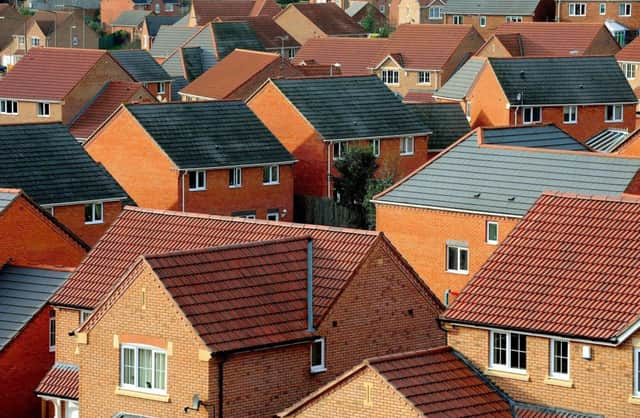Used land ‘a solution to housing crisis for four years’


More than 400,000 homes could be built on previously developed land which already has outline or detailed planning permission, according to information from local authorities compiled by the Campaign to Protect Rural England (CPRE).
And over 550,000 more could be accommodated on vacant or derelict land that does not have planning permission, the research by CPRE said.
Advertisement
Hide AdAdvertisement
Hide AdAlmost half of the vacant space is located in the South East, East of England and London. In the capital, where there is huge pressure for housing, 146,000 homes could be built on brownfield land, a report by the organisation said.
In total the report identifies enough brownfield land for 976,000 homes, providing the country with a four-year supply of new housing even if no other land is used.
CPRE said the figure was an underestimate as it does not include underused land such as car parks which could be used for housing.
The study says 36 per cent of the publicly identified brownfield land in Yorkshire and the Humber was suitable for use as housing in 2012, the lowest rate in the country. But the region still had 810 hectares of previously developed land with outline or detailed planning permission in place where nearly 39,000 homes could be built.
Advertisement
Hide AdAdvertisement
Hide AdThis does not include homes that could be accommodated on vacant or derelict land that does not have planning permission.
Of the region’s local authority areas, Leeds has the most previously developed land at 983 hectares, though only 150 of this had planning permission or was currently in use and allocated in a local plan.
In York, the local authority’s plans to make land available for around 20,000 new homes to be built by 2030 attracted strong opposition. The total of houses to be built was later downgraded to 17,000. It was announced in October that a 35-hectare brownfield site in York is set to undergo major redevelopment to deliver more than 400 homes and a substantial amount of office space.
Some brownfield sites nationwide have been identified as important wildlife hotspots for creatures such as rare beetles, but CPRE said just eight per cent of brownfield land is important habitat, leaving plenty for development.
Advertisement
Hide AdAdvertisement
Hide AdBut the campaign group is concerned that new national planning rules do not prioritise brownfield development, which means undeveloped Green Belt land is built on instead.
Paul Miner, planning campaign manager at CPRE, said: “This research demonstrates the huge existing capacity for housing on brownfield land.
“At a time when there is great pressure on our green spaces, utilising this land through a brownfield first policy would protect our countryside and regenerate urban areas.”
Leeds is one of the best-value cities to rent a home, according to a new report.
Advertisement
Hide AdAdvertisement
Hide AdHomeLet, which provides insurance products to the private rented sector, analysed 16 cities across the UK to calculate the cheapest and the most expensive places to rent, compared with local incomes.
In Leeds 34 per cent of monthly net income taken up by rent, the third lowest behind Cardiff and Plymouth. London’s rate of 49 per cent was highest.
Martin Totty, chief executive of Barbon Insurance Group, of which HomeLet is part, said: “Our analysis has produced some surprising results. In some parts of the UK where rental prices are now falling or stagnant, the data tells us that renting in some cities in these regions is still stretching tenant affordability.”